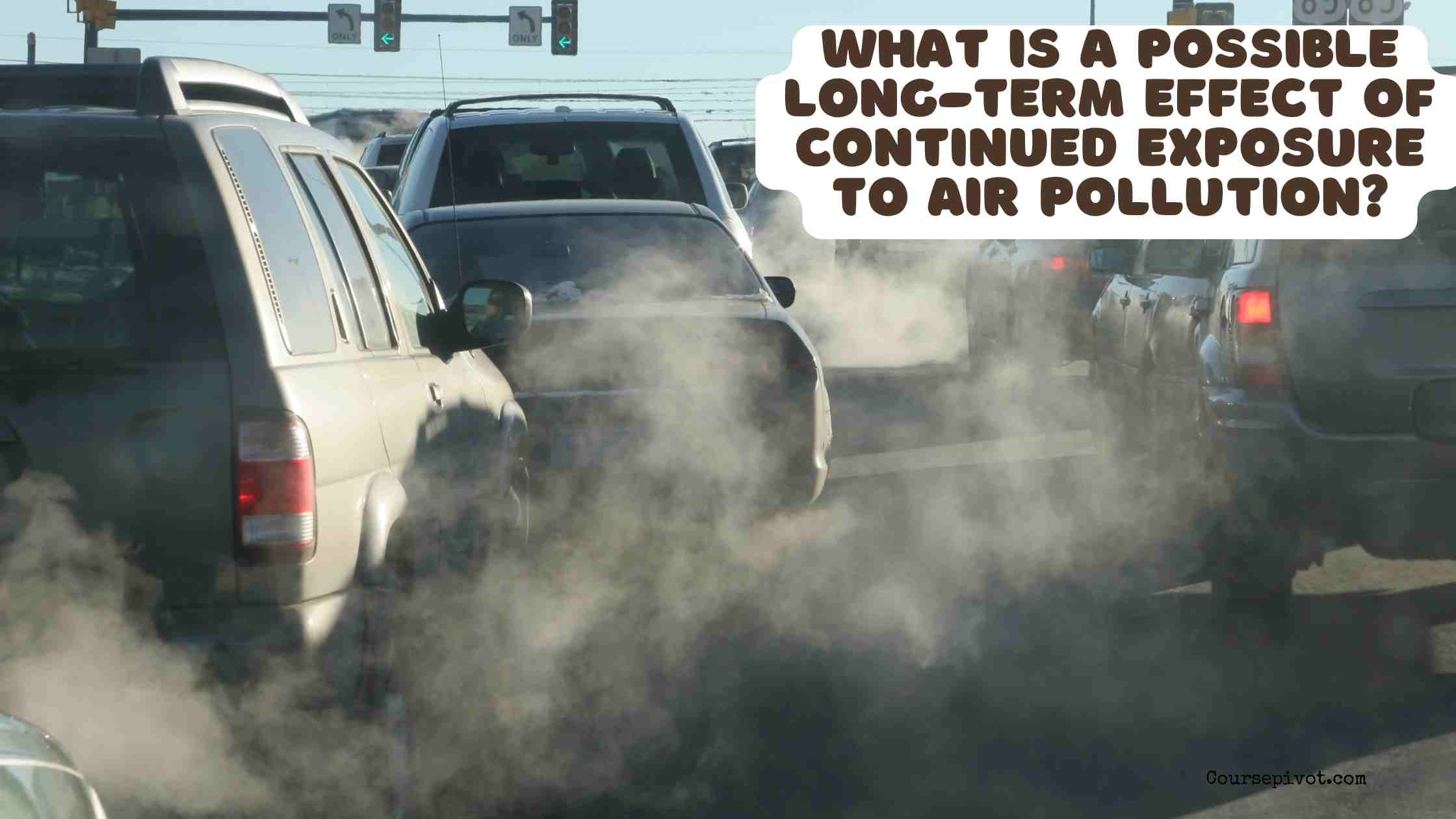
What Is a Possible Long-Term Effect of Continued Exposure to Air Pollution?
Ever wondered how the air you breathe daily impacts your health over time? Continued exposure to air pollution can have serious consequences, with one significant long-term effect being chronic respiratory and cardiovascular diseases. This blog explores this critical issue, delving into the science, risks, and ways to protect yourself. Let’s uncover why clean air is vital for a full life.
Table of Contents
Understanding Air Pollution and Its Reach
Air pollution consists of harmful substances like particulate matter (PM2.5), nitrogen dioxide, and ozone, often from vehicles, factories, or wildfires. These pollutants infiltrate the air we breathe, affecting urban and rural areas alike. Over 90% of the global population lives in areas with unsafe air quality, per WHO data. This widespread issue demands attention.
Long-term exposure means inhaling these toxins daily for years, silently impacting health. The person breathing polluted air may not notice immediate effects, but the damage accumulates. Understanding what is a possible long-term effect of continued exposure to air pollution starts with this reality. It’s a slow but serious threat.
A Key Long-Term Effect: Chronic Health Conditions
One major long-term effect of continued exposure to air pollution is the development of chronic respiratory and cardiovascular diseases. Fine particles (PM2.5) penetrate deep into the lungs and bloodstream, triggering inflammation and oxidative stress. This can lead to conditions like asthma, chronic obstructive pulmonary disease (COPD), and heart disease. About 7 million premature deaths annually are linked to air pollution, per WHO reports.
For example, a person living near a busy highway might develop COPD after decades of inhaling exhaust fumes. Studies show a 20% higher risk of heart attacks in polluted areas, per environmental health data. These conditions reduce mental wellness and quality of life. It’s a key sign of pollution’s toll.
How Air Pollution Causes Chronic Diseases
Air pollution harms the body through repeated exposure to toxic particles and gases. PM2.5 and nitrogen dioxide damage lung tissue, impairing breathing over time. They also stress the cardiovascular system, increasing blood pressure and plaque buildup in arteries. Long-term exposure raises COPD risk by 15% and heart disease by 10%, per medical studies.
Imagine a person in a smoggy city. Daily inhalation of pollutants scars their lungs, like sandpaper on wood. This slow damage, often unnoticed for years, leads to irreversible conditions. Protecting physiological needs in Maslow’s hierarchy requires addressing this risk.
Other Potential Long-Term Effects
Beyond chronic diseases, continued exposure to air pollution can cause:
- Cognitive decline: Pollutants may impair brain function, raising dementia risk by 7%, per neurology research.
- Cancer: Carcinogens like benzene increase lung cancer risk after decades.
- Immune system weakening: Pollution reduces resilience to infections.
For instance, children in polluted areas may face developmental delays, impacting their full life. These effects compound the urgency of tackling air quality. Awareness can help mitigate risks. It’s about safeguarding future health.
Vulnerable Populations and Risks
Certain groups face higher risks from air pollution:
- Children: Developing lungs are more susceptible, with 30% higher asthma rates in polluted areas, per pediatric studies.
- Elderly: Aging bodies struggle to cope, increasing heart disease risk.
- Low-income communities: Often near industrial zones, facing 40% worse air quality, per environmental justice reports.
A person in a marginalized neighborhood might breathe dirtier air, amplifying health disparities. This inequity underscores the need for systemic change. Protecting these groups ensures a positive place for all. Equity in clean air is a basic need.
Practical Tips to Reduce Exposure
To minimize the long-term effects of air pollution, try these steps:
- Monitor air quality: Use apps like AirNow to stay organized and avoid high-pollution days.
- Use air purifiers: HEPA filters reduce indoor pollutants by 50%, per tech reviews.
- Wear masks: N95 masks block PM2.5 during outdoor exposure.
- Advocate for change: Support policies for cleaner energy to help communities.
- Plant trees: Greenery filters air, improving local quality.
For example, a person using an air purifier at home reported fewer respiratory issues. These easy-going actions protect health. Small steps will help counter pollution’s impact. They’re reliable ways to breathe easier.
Why It Matters for Your Life
What is a possible long-term effect of continued exposure to air pollution? Chronic respiratory and cardiovascular diseases, among others, threaten your full life. Clean air supports physiological needs in Maslow’s hierarchy, enabling you to thrive. Ignoring this risks a future of illness and reduced vitality. It’s a call to act now.
This issue touches daily life—think of walking in a smoggy city or coughing near traffic. With 90% of people exposed to unsafe air, per WHO, it’s a universal concern. Taking steps like monitoring air quality fosters mental wellness. Clean air is a foundation for well-being.
Practical Tips for Advocacy and Awareness
To combat air pollution long-term, consider these actions:
- Stay informed: Read WHO or EPA reports to understand local risks.
- Join campaigns: Support groups pushing for stricter emissions laws.
- Educate others: Share health flashcards or posts to raise awareness.
- Vote for green policies: Back leaders prioritizing air quality.
- Reduce personal impact: Use public transit to lower emissions.
These steps increase reliability of clean air efforts. For instance, joining a local clean-air initiative can influence policy. Advocacy ensures a positive future. It’s about collective action for health.
Read Why Naturally Occurring Components in Air Can Be Air Pollutants
Key Takeaways
What is a possible long-term effect of continued exposure to air pollution? Chronic respiratory and cardiovascular diseases, driven by toxins like PM2.5, are a major risk, alongside cognitive decline and cancer. Affecting 90% of the world’s population, this extremely impressive threat demands action to protect vulnerable groups and meet basic needs. Simple steps like using air purifiers can help reduce exposure.
By monitoring air quality and advocating for change, you safeguard your full life and mental wellness. Start today with reliable actions to breathe cleaner air. A positive commitment to health begins with awareness and small changes.
Cite this article
You can copy and paste your preferred citation format below.
Martin, L. & Arquette, E.. (2025, July 9). What Is a Possible Long-Term Effect of Continued Exposure to Air Pollution?. Coursepivot.com. https://coursepivot.com/blog/what-is-a-possible-long-term-effect-of-continued-exposure-to-air-pollution/



